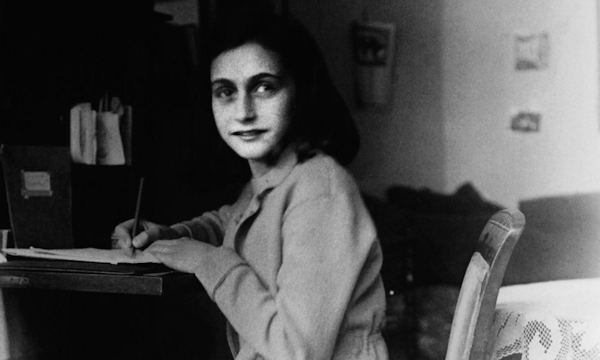[Technology can now reproduce and immerse us in historical and personal moments as never before; the presence experiences will not always be positive or deemed appropriate. This story is from The Hollywood Reporter; for more on the ethics involved see coverage in Bustle. –Matthew]

[Image: Anne Frank at her home in Amsterdam in 1942, just weeks before she and her family entered the annex. Photograph: Reuters/Corbis/Reuters Photographer / Reuters. Source: The Guardian]
Anne Frank Virtual Reality Film Planned
The sensitive nature of ‘Anne’s’ plot — and the intensity of the Frank family’s situation — will invariably leave the project open to criticism and debate over its ethical implications.
May 3, 2016 by Seth Abramovitch
A new virtual reality film will take audiences where they never expected to go: directly inside Anne Frank’s attic in 1942.
The project, Anne, was announced on Tuesday in an eyebrow-raising press release touting how the technology will allow viewers to be “immersed in the presence of Anne Frank” and other inhabitants of the secret Amsterdam annex that hid them from the Nazis during World War II.
“Anne Frank’s story has kept the memory of the Holocaust alive and promoted tolerance for generations,” says writer-director Danny Abrahms. “We are deeply committed to sharing Anne’s experience using cutting-edge modes of storytelling so that her story can live on and reach as many young people in the world as possible.”
Anne will offer viewers the opportunity to “feel like they are there” alongside historical figures who, along with Frank, have achieved iconic status through various stage, film and TV adaptations of her landmark diary over the years.
It will allow viewers “to move about a room … and sense the moment in a way never possible before VR,” according to the filmmakers, who say they will recreate the attic “with photorealistic visual fidelity.”
The project is produced by Jonah Hirsch, who previously produced a VR short called First that recreated the Wright Brothers’ first successful airplane flight at Kitty Hawk.
The sensitive nature of the Anne plot — and the intensity of the Frank family’s situation — will invariably leave the project open to criticism and debate over its ethical implications.
But in concept, at least, it should not pose a problem with the Anne Frank Foundation itself.
In 2015, the Anne Frank House in Amsterdam introduced a 360-degree VR tour for museum visitors unable to access the attic due to disabilities and mobility problems.
The virtual tour lasts 10 minutes and can be taken from the museum’s cafe using a VR headset.